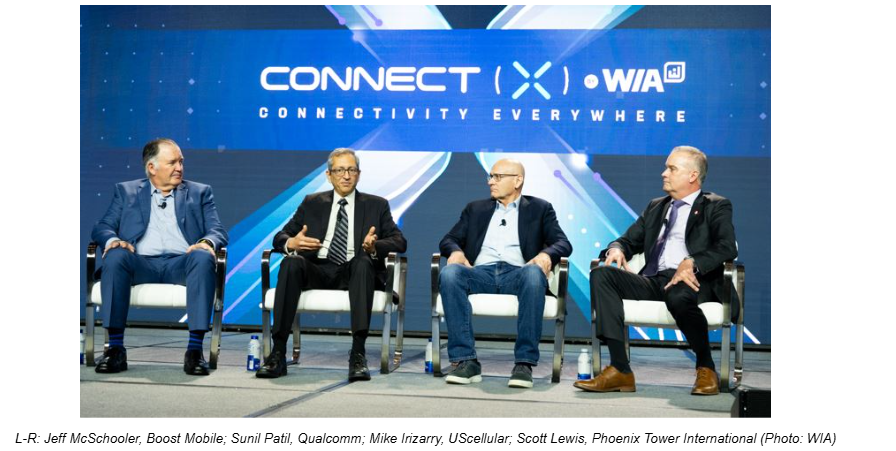Connect(X) 2025
In a keynote presentation titled ‘Building the Future: Technology Leaders Shaping Wireless Infrastructure Today and Tomorrow,’ a group of experienced executives discussed factors affecting the deployment and development of wireless infrastructure. They also provided insights on how technological advances are expected to influence future networks.
Scott Lewis of Phoenix Tower International posed a series of discussion points. Spectrum was top of mind. Mike Irizarry said that UScellular is using AI to optimize site location and capacity in the uplink, especially for fixed wireless access use. Jeff McSchooler said Boost Mobile is using carrier aggregation to expand downlink and uplink capacity. He said 5G Advanced is becoming important enabling high capacity connectivity such as MIMO 4T/4R and questioned how RF equipment designs will morph to optimize use of existing spectrum while carriers wait for new spectrum. Qualcomm’s Sunil Patil suggested that improved link efficiency is needed to support the development of new infrastructure products and devices, like wearables that use 5G RedCap (Reduced Capacity).
Lewis pointed out that 5G Standalone is an important network development around the world. Irizarry said that UScellular uses 5G SA for network slicing in FWA, Business and Consumer applications to preserve QoS. McSchooler emphasized that Boost Mobile has already deployed 5G SA in the public cloud and that network data is containerized and cloud native. Importantly, Boost is able to implement network slicing with 5G SA. Patil added that MNOs are able to gain transmission efficiencies with better network architecture designs that 5G SA accommodates.
The panelists agreed that optimization of uplink capacity is becoming more important to support applications such as video gaming, video conferencing, virtual reality and autonomous vehicle operation. The need for reduced latency in such real-time applications is driving MNOs to densify their networks faster.
Certainly, every discussion includes its AI component. The panelists talked about different aspects of AI used in different places in a mobile network whether in the RAN, the cloud or with more computing capability on mobile devices. The network is becoming more intelligent with hybrid AI configurations enabling more local computing, with edge compute or cloud computing handling larger IT workloads.
The discussion concluded with Lewis asking each of the panelists what topic the industry will be addressing a year from now. Irizarry believes the industry will still be emphasizing the need for more spectrum. Patil suggested we will be talking about 6G and what it can do beyond 5G, while acknowledging such discussions also start with spectrum. McSchooler thinks that AI will continue to be a hot topic along with the rise of APIs as on-ramps to the network that allow external developers to create new applications and services.
By John Celentano, Inside Towers Business Editor





Reader Interactions